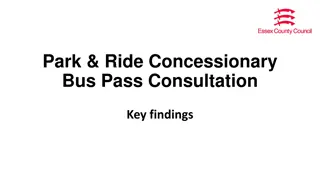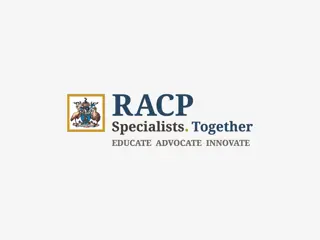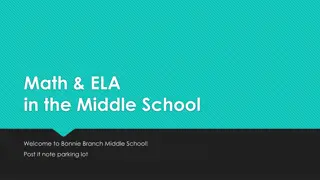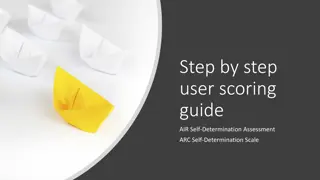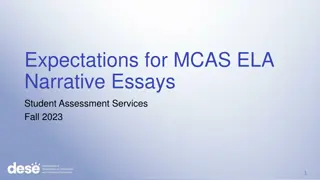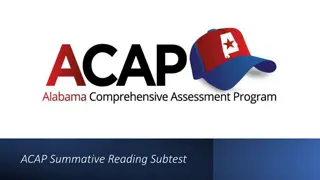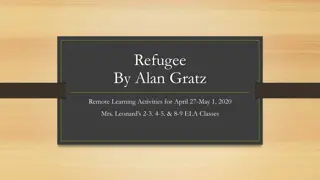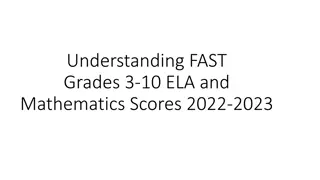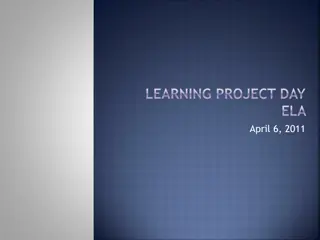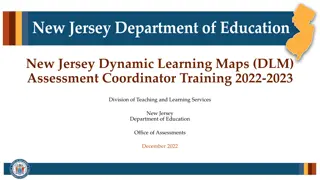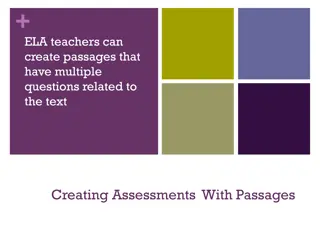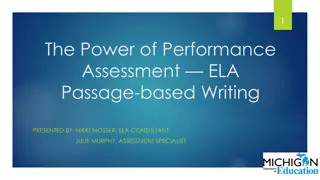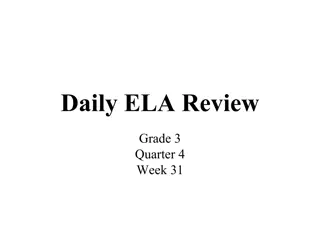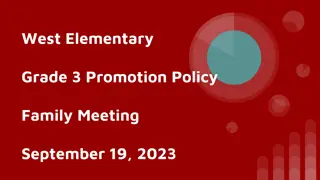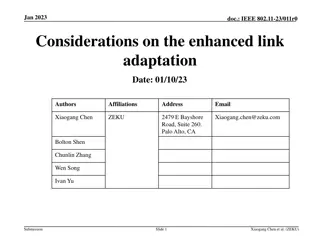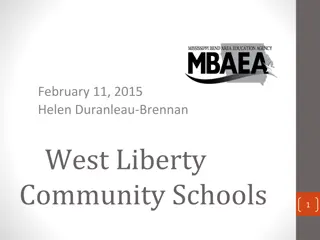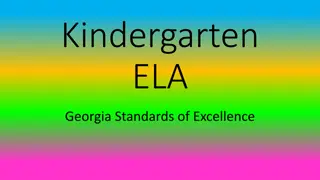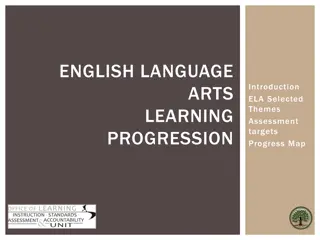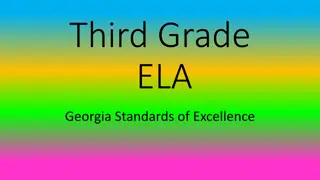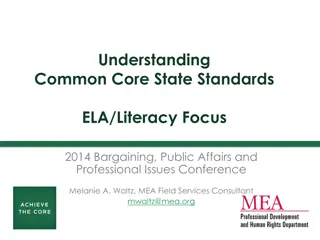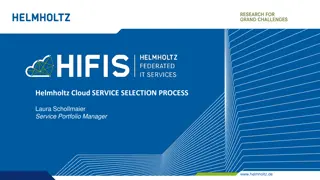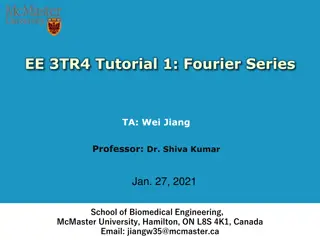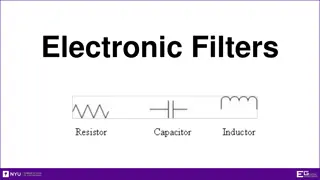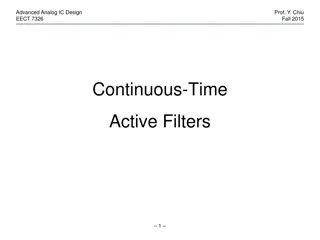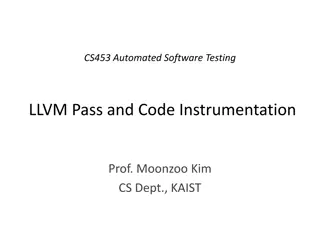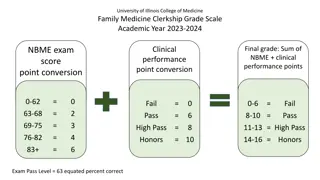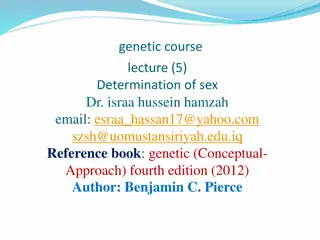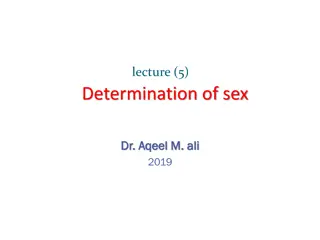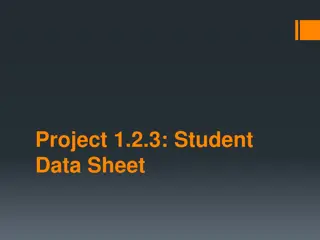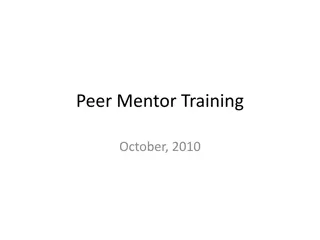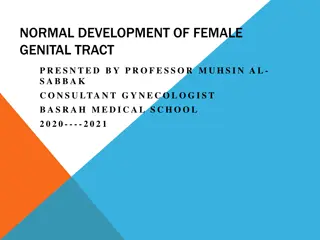Developing ELA Criteria for Pass/Fail Determination
Explore the importance of setting appropriate criteria for pass/fail determination in ELA education, focusing on objectives, learning intentions, and updated standards. Discover resources to enhance literacy instruction and understand the foundational skills outlined by the standards. Gain insights on using standards to develop goals and improve student literacy across disciplines.
Download Presentation

Please find below an Image/Link to download the presentation.
The content on the website is provided AS IS for your information and personal use only. It may not be sold, licensed, or shared on other websites without obtaining consent from the author. Download presentation by click this link. If you encounter any issues during the download, it is possible that the publisher has removed the file from their server.
E N D
Presentation Transcript
Learning Intentions and Feedback for ELA 6-12 Developing appropriate criteria for pass/fail determination April 14, 2020 https://padlet.com/morgan_dunton/2020ELAvirtual
Recording of this session Recorded April 14, 2020. To get contact hour certificate: https://forms.gle/deJBxe6uqmzr3Gj1A
Determine appropriate objectives the really big ideas Use updated ELA standards streamlined User friendlier Refocuses larger purpose of ELA/literacy instruction Opens up room for teacher expertise
Objectives and Learning Intentions: common definitions Objectives are the big ideas just a few for the whole year or semester Learning intentions May be iterative Are far more numerous Can address a single lesson or multiple lessons
Easier to recognize the multi-strand relationship of the standards Why use updated standards to develop goals Introductions and preambles set the purpose and suggest objectives What was removed is essential to setting goals
Documents to reference ELA specialists have developed several documents to help study and use Simple comparison chart Simple explanation of chart Standards in common format Standards in K-12 progression for each standard
Begin with the introduction to ELA English Language Arts/Literacy is the foundation for learning in all of the content areas. The Performance Expectations define skills and establish measurable articulations of what the student understands and can do. The skills outlined by the standards are designed so that students can receive literacy instruction with each text they encounter across all disciplines.
What can you find in the standards?
Language Moved to the first position No significant content change Begin with language Informs complexity of texts Informs reading strategies Applies to all strands
Speaking & Listening Combined similar standards Presentation of knowledge and ideas more explicitly linked to writing Multi-media formats expected essentially elevates viewing and listening to text status
Reading Combined 4 columns into one no distinction for the different text types or disciplines. What is the impact?
Writing Text types moved out of rule can become guidance Many standards combined for efficiency Application to other content areas expected addressed in preamble
Process Determine objective(s) from introduction and preambles Set learning goals for lessons using standards/performance expectations Use S/PE from multiple strands; try to include a language standard
Process Determine success criteria for each learning intention what will it look like to meet the standards for that learning intention Use a single statement of criteria Consider feedback and whether students can provide their own
Craft evidence-based responses when speaking, writing, or presenting. L.6.6-8 Acquire and use accurately grade-appropriate general academic and domain-specific words and phrases; gather vocabulary knowledge when considering a word or phrase important to comprehension or expression. R.7.6-8 Determine the meaning of figurative, connotative, and technical word meanings and phrases as they are used in various texts; analyze the impact of specific word choices and techniques on meaning and tone. Identify and define vocabulary essential to discuss a topic.
Craft evidence-based responses when speaking, writing, or presenting. SL.1a.6-8 Come to discussions prepared, having read or researched material under study; explicitly draw on that preparation by referring to evidence on the topic, text, or issue to probe and reflect on ideas under discussion. R.9.6-8 Analyze how and why authors from various contexts (e.g. diverse, intersectional, multicultural, religious) use perspective for intended purposes and/or audiences. W.1.6-8 a. Investigate self-generated questions by participating in inquiry that builds increasingly complex knowledge, refocusing inquiry as needed. Collect evidence to inform discussion.
Go to padlet for documents Find Keep It Simple in session 2 for criteria/feedback example Template for lesson planning and exemplar included To get contact hour certificate: https://forms.gle/deJBxe6uqmzr3Gj1A


